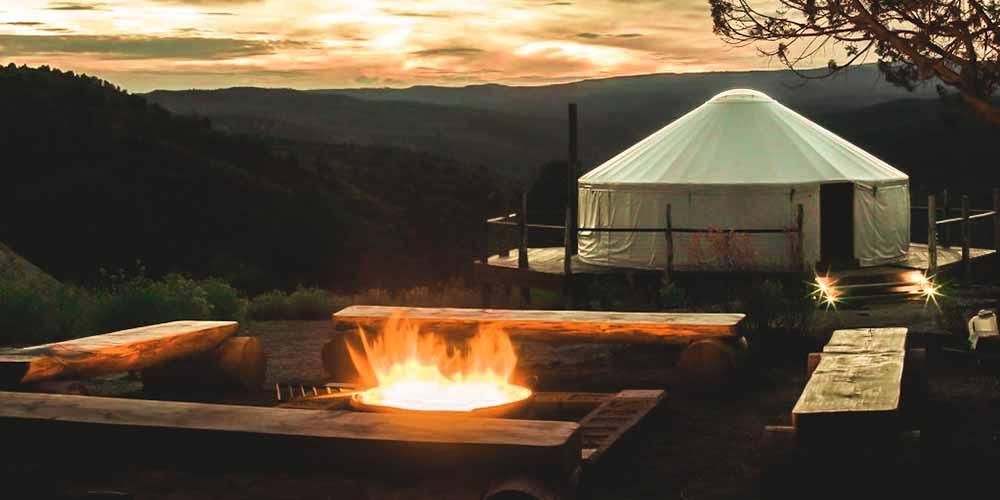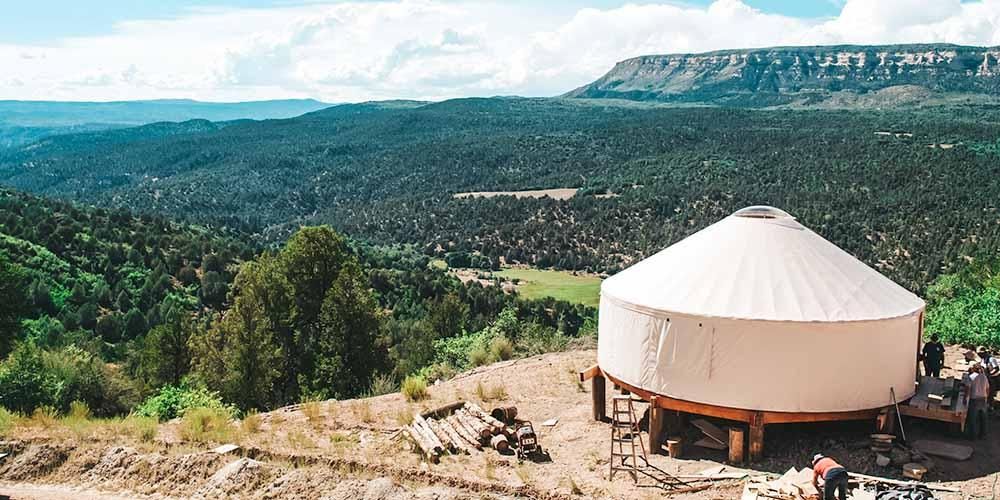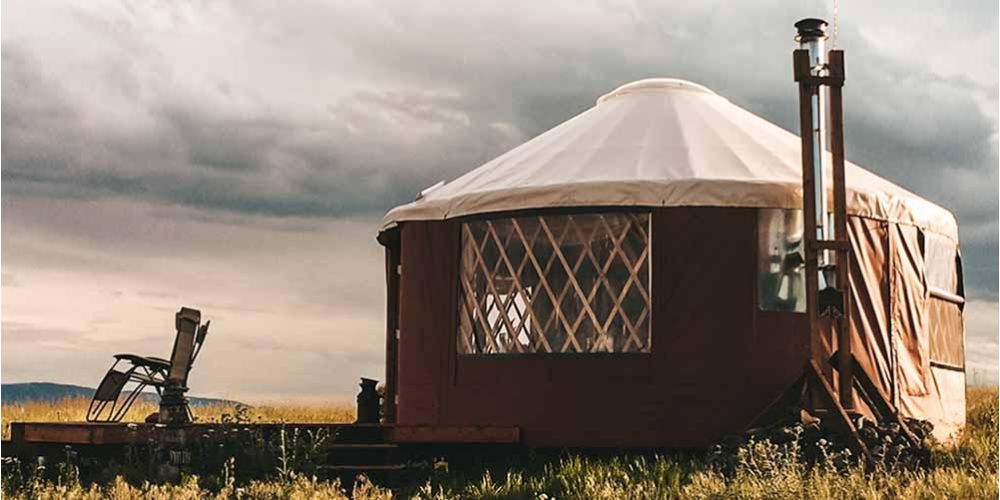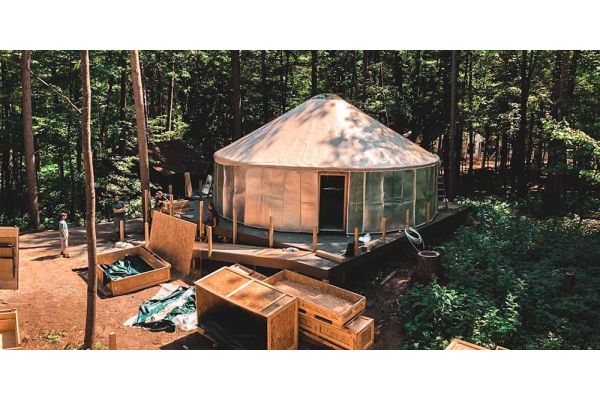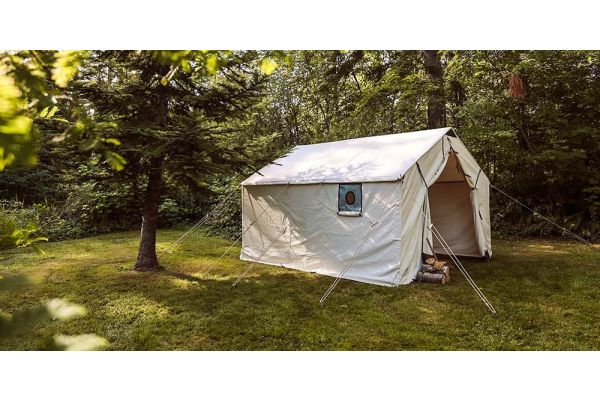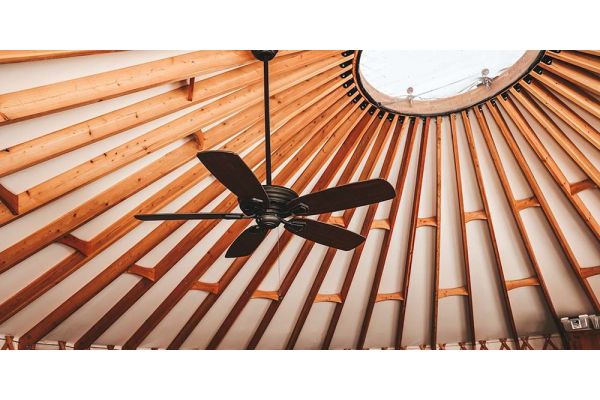Yurts, Fire, Safety, Let's Talk
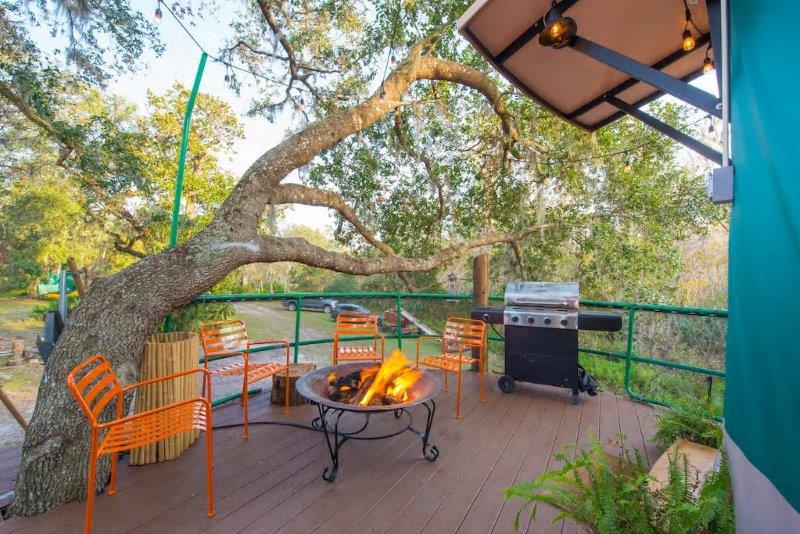

This post was originally published in July 2014, during one of the driest, and worst wildfire seasons Washington state had seen. Summer 2015 is shaping up to be just as dry and risky for fires, if not worse!
A little planning and preparation go a long way to ease your mind and keep you safe in case of fire.
Here are some things to keep in mind ...
As I tell people who ask about yurts and hurricanes, a yurt is no safer than a stick-built house in this situation. If you are in a yurt in 150 mph winds – you should have your head examined!
The same advice applies here: if a wildfire is coming your way – pack your belongings, including medicine, important papers, and animals (and their medicine and food), and get the heck out of there.
The best advice is to keep your yurt clear of debris and dry brush.
Here are some things to keep in mind during wildfire season
- The roof is made of non-flammable materials, however, a long-standing ember can melt through the vinyl. In the event, a spark lands on your roof, have water ready to spray down the roof. If you do not have hoses or water pressure, keep a “super-soaker” toy water cannon and a minimum of 100 gallons of water on hand during the dry season.
- Do you have a 30-foot defensible zone around your yurt and its attachments, including decks and fencing? A defensible zone means all ignitable substances (such as wood piles, dead leaves, brush piles, and flammable vegetation) are removed.
- Have you managed the vegetation in the 100-200 feet surrounding your cabin? This is your Yurt Ignition Zone. By reducing the fuel load here you can reduce the intensity of an approaching fire. Thin your trees, particularly coniferous ones (with needles.) Trim the lowest tree limbs 6-10 feet off the ground.
- Do you have screens over every opening into your yurt? This would include all doors and skylight domes, as well as windows. Screens prevent burning embers from entering the structure.
- Is your yurt accessible to fire crews? Roads and driveways should be wide enough to accommodate emergency vehicles, and there should be a turn-around at the end of your drive.
- Do you have an emergency plan? If you live on an “in-and-out” road meaning that is the only way in or out…think outside the box for emergency evacuation routes. Do you have a known place to meet family members in another location? My family probably thinks it’s a little nutty, but we have a plan in place, should a natural or man-made disaster strike. We plan to meet at the base of the Space Needle (or where it was, depending on the disaster!) That means if there is no electricity, and no cell phone service … we know where to look for each other! I encourage you to have a similar discussion with your loved ones.
- If your yurt is located at the top of a hill, it may be more susceptible to burning. Fire preheats fuel in its path; consequently, a fire burning upslope travels faster than a fire backing down a slope. South-facing slopes also dry faster than others, causing a fire to burn with more intensity.
Visit www.firewise.org to get more information.
Remember – most wildfires are either caused by lightning or can be linked to humans, cigarettes, welding equipment, and campfires. If you are glamping this summer, please be extra cautious and be prepared with a fire extinguisher.
A small investment that could save your big investment!
Enjoy your summer journey,
Enjoy the journey!

